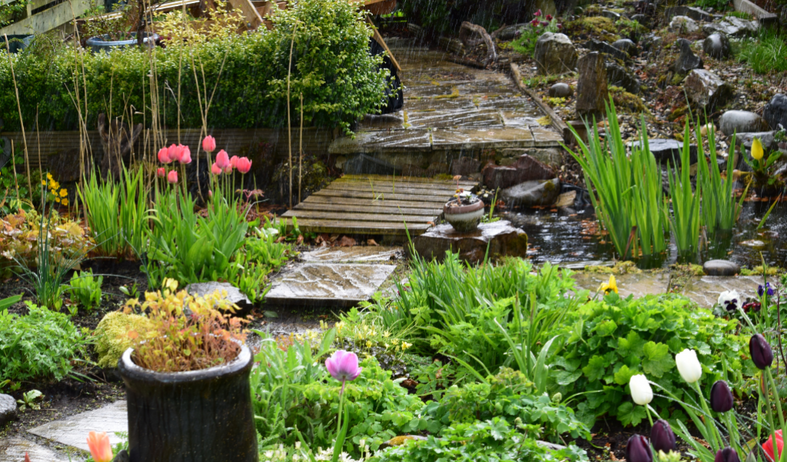
The Benefits of Creating a Rain Garden in Your Yard
Jan 13th 2025
At Twin Oaks Nursery & Garden Center, we believe in creating beautiful and sustainable gardens that not only enhance your outdoor space but also contribute positively to the environment. One fantastic way to achieve this is by creating a rain garden in your yard! Let's explore what a rain garden is, how to create one, and the amazing benefits it can bring to your home and garden.
What is a Rain Garden?
A rain garden is a specially designed garden space that captures and absorbs rainwater runoff from impervious surfaces like rooftops, driveways, and sidewalks. Rain gardens are typically planted with a variety of native plants that thrive in wet conditions. They not only help manage stormwater but also provide an aesthetically pleasing landscape feature around your home.
Why Create a Rain Garden?
1. Helps Improve Drainage
Rain gardens can significantly aid in soaking up excess rainwater. This helps reduce flooding in your yard and prevents water from pooling in unwanted areas. It’s an excellent way to manage drainage without relying solely on artificial drainage systems.
2. Protects Local Waterways
By capturing and filtering rainwater, rain gardens help prevent pollutants from flowing into nearby streams, rivers, and lakes, which can negatively impact local ecosystems. They play an important role in keeping our waterways clean and healthy.
3. Encourages Biodiversity
Planting a variety of native flowers, shrubs, and grasses attracts local wildlife, including pollinators like butterflies and bees. Native plants support the local ecosystem better than non-native species by providing food and habitat for birds, insects, and other wildlife.
4. Reduces Erosion
As rainwater rushes over hard surfaces, it often leads to soil erosion. A rain garden increases water absorption, reducing the speed and volume of runoff and helping to preserve your beautiful landscape.
5. Adds Visual Appeal
Imagine a lush, colorful garden filled with attractive plants and flowers right in your yard! Rain gardens offer a beautiful way to enhance your landscaping while serving a practical purpose. You can use a mix of flowering trees, shrubs, and perennials to create an eye-catching feature.
How to Create a Rain Garden
Creating a rain garden is simpler than you might think! Here are some steps to help you get started:
Step 1: Choose the Right Location
Identify a spot in your yard that collects rainwater runoff. It should be at least 10 feet away from your home’s foundation and in a place that receives full to partial sun.
Step 2: Decide on the Size
The size of your rain garden should be around 10% of the size of the area that drains into it. A modest-sized garden is often ideal for home landscapes.
Step 3: Dig and Shape the Garden
Excavate the area to create a shallow depression that will hold water. The depth can vary, but a good rule of thumb is around 6 to 12 inches deep.
Step 4: Select Plants for Your Garden
Choose a variety of native plants that thrive in wet conditions. Consider including flowering trees, perennials, and shrubs from our nursery that will attract pollinators and provide vibrant focal points.
Step 5: Add Soil and Mulch
Add a mix of sandy soil and compost to promote drainage, then cover with mulch to prevent weeds and retain moisture.
Step 6: Water Wisely
Once planted, make sure you water your new garden adequately as the plants establish. Regular maintenance will help the garden thrive!
In Conclusion
Creating a rain garden is a wonderful way to contribute to environmental sustainability while enhancing the beauty of your yard. At Twin Oaks Nursery & Garden Center, we’re here to help! Whether you’re looking for the perfect plants, supplies, or just friendly advice, visit us for everything you need to get started on your very own rain garden.
Let’s work together to make your outdoor space not only beautiful but also beneficial to our precious planet!
